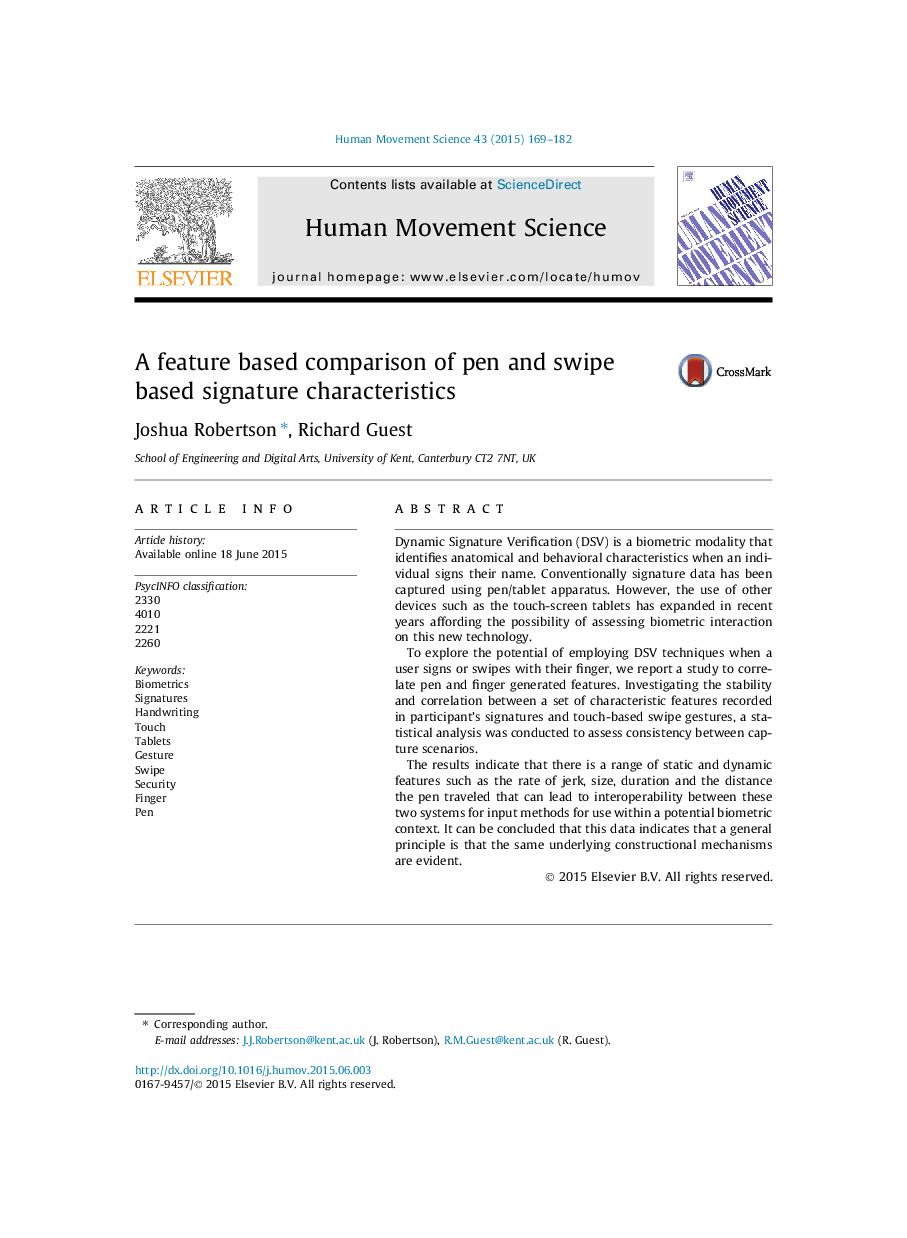| Article ID | Journal | Published Year | Pages | File Type |
|---|---|---|---|---|
| 928276 | Human Movement Science | 2015 | 14 Pages |
•We report a study to correlate stylus and finger generated features.•We discuss the motor function and the possibility of adapting the work into a biometric context.•The results indicate that there are static and dynamic features that lead to interoperability.•These data indicate that the same underlying constructional mechanisms are evident.
Dynamic Signature Verification (DSV) is a biometric modality that identifies anatomical and behavioral characteristics when an individual signs their name. Conventionally signature data has been captured using pen/tablet apparatus. However, the use of other devices such as the touch-screen tablets has expanded in recent years affording the possibility of assessing biometric interaction on this new technology.To explore the potential of employing DSV techniques when a user signs or swipes with their finger, we report a study to correlate pen and finger generated features. Investigating the stability and correlation between a set of characteristic features recorded in participant’s signatures and touch-based swipe gestures, a statistical analysis was conducted to assess consistency between capture scenarios.The results indicate that there is a range of static and dynamic features such as the rate of jerk, size, duration and the distance the pen traveled that can lead to interoperability between these two systems for input methods for use within a potential biometric context. It can be concluded that this data indicates that a general principle is that the same underlying constructional mechanisms are evident.
